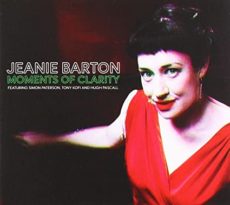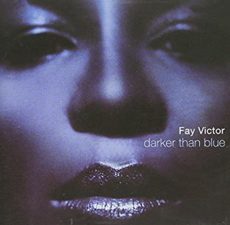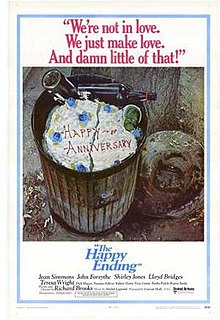
Daily Dose Of Jazz…
Jeanie Barton was born on August 18, 1978 in London, England. She spent years as a principal in the National Youth Music Theatre, then studied jazz harmony at Morley College in London as well as improvisation with BBC Jazz award winner Anita Wardell. She also cut her teeth as a singer for bebop pioneer Laurie Morgan’s trio, fronting their famous North London weekly gig, Downstairs at The King’s Head in Crouch End for over a decade.
She went on to support Georgie Fame, as well as backing vocals for Luddy Samms of The Drifters. Barton has performed for Samuel L Jackson, Shirley Bassey, and Pierce Brosnan. She has sung at The Jazz Cafe, The 606 Club, Ronnie Scott’s and The National Theatre, as well as a Parisian cruise on the Seine and the Cannes Film Festival.
Vocalist Jeanie Barton was voted Best Newcomer at the Marlborough Jazz Festival 2015, and in addition writes for the London Jazz News and Nottingham Live, formally the Nottingham Post.
More Posts: bandleader,history,instrumental,jazz,music,vocal

Daily Dose Of Jazz…
Fay Victor was born on July 26, 1965 in Brooklyn, New York City. After spending her early childhood years in New York, Zambia, and Trinidad & Tobago, her mother settled in Long Island, New York where she spent her teenage years. After her mother’s sudden death, she re-discovered music and singing, and after a three-month stint at a club in Fukui City, Japan with pianist Bertha Hope, she decided to start a career as a jazz singer.
In 1996, Fay settled in Amsterdam, The Netherlands and performed and toured through the country, as well as Spain, Germany, the UK, Sweden, Russia, and India. While living in the Netherlands, Victor branched out into blues, songwriting, and forms of improvising outside the standard jazz canon.
Returning to the States in 2003, Victor has made her home in New York City. She has worked with the likes of Randy Weston, Roswell Rudd, Anthony Braxton, Misha Mengelberg, Vijay Iyer, Tyshawn Sorey, Wadada Leo Smith, Nicole Mitchell, Marc Ribot, Martine Syms, Daniel Carter, William Parker, Darius Jones, Wolter Wierbos, Ab Baars, Joe Morris, Sam Newsome, and Reggie Nicholson.
Victor has coined the term “freesong” to describe her vocal approach. In her jazz repertoire, he has specialized in the work of Thelonious Monk, Ornette Coleman, and Herbie Nichols.
Vocalist, composer, lyricist, and educator Fay Victor, who originally sang in the traditional jazz field, has expanded her repertoire to include blues, opera, free improvising, avant-garde, modern classical music, and occasional acting, continues to perform and record.
More Posts: bandleader,composer,educator,history,instrumental,jazz,lyricist,vocal

The Quarantined Jazz Voyager
The Quarantined Jazz Voyager’s next selection from his library is the 1962 album release Lena Horne titled Lena On The Blue Side. This studio album, released by RCA Victor in stereo and monaural. The recording took place in New York City in the summer of 1961.
The album features mainly blues-inspired songs, a departure for Horne from her usual standards, and recordings from the Great American Songbook. The recordings were arranged and conducted by Marty Gold.
The album was received well by the music press and Billboard Music Week of February 1962 rated it with a four star. Charting in the Billboard 200 album chart at #102. The complete album has only been reissued on CD in Japan in 1991.
Track List | 33:39Paradise ~ 3:40; The Rules Of The Road ~ 3:36; Darn That Dream ~ 2:41; I Wanna Be Loved ~ 3:02; I Hadn’t Anyone Till You ~ 2:45; Someone To Watch Over Me ~ 3:41; It’s A Lonesome Old Town ~ 2:32; I’m Through With Love ~ 2:58; What’ll I Do ~ 1:57; It Might As Well Be Spring ~ 3:30; They Didn’t Believe Me ~ 2:15; and As You Desire Me ~ 3:02.
Personnel- Lena Horne – Vocals
- Andy Ackers – Piano
- George Duvivier – Bass
- Al Caiola – Guitar
- Osie Johnson – Drums
- Bernie Glow, Mel Davis – Trumpet
- Sy Berger, Tony Studd – Trombone
- Strings
More Posts: adventure,club,genius,jazz,museum,music,preserving,restaurant,travel,vocal,voyager

Hollywood On 52nd Street
What Are You Doing the Rest of Your Life? is a song with lyrics written by Alan Bergman and Marilyn Bergman and original music written by Michel Legrand for the 1969 film The Happy Ending. The song was nominated for an Academy Award For Best Original Song but lost out to Raindrops Keep Fallin’ on My Head.
Alan Bergman would recall that after Michel Legrand had written eight melodies that were somehow not viable for the film, Marilyn Bergman suggested the opening line “What are you doing the rest of your life?”, and Legrand then completed the song’s melody based on that phrase.
Marilyn Bergman would later comment on the double meaning of the phrase “What are you doing the rest of your life?” within its parent film: as the romantic theme song’s title the question overtly references the marriage proposal Mary Spencer (played by Jean Simmons) received and accepted sixteen years earlier but, as Mary’s present-day angst becomes apparent, “What are you doing the rest of your life?” is recast as a question Mary must ask herself.
What Are You Doing the Rest of Your Life? was sung in The Happy Ending by Michael Dees whose version was included on the film’s soundtrack album. The Story
1953: Through the course of a Colorado autumn and winter, Mary Spencer (Simmons) and Fred Wilson (Forsythe) lead an idyllic existence. Mary drops out of college (with 6 months to go) to marry Fred. Their perfect wedding mirrors the happy endings of the films Mary loves. However, there are no fairytale happy endings and sixteen years later Mary is off to find her happiness, leaving behind her husband and daughter, which she eventually does despite her mother and her husband’s pleas.

Daily Dose Of Jazz…
Alex Welsh was born on July 9, 1929 in Edinburgh, Scotland, Welsh and started playing in the teenage Leith Silver Band and with Archie Semple’s Capital Jazz Band. After a move to London in the early 1950s, he formed a band with clarinetist Archie Semple, pianist Fred Hunt, trombonist Roy Crimmins, and drummer Lenny Hastings. The band played a version of Chicago-style Dixieland jazz and was part of the traditional jazz revival in England in the 1950s.
In the 1960s, Welsh’s band played with Earl Hines, Red Allen, Peanuts Hucko, Pee Wee Russell, and Ruby Braff. During that period and into the early 1970s, Welsh frequently toured, including many visits to the United States. Influenced by his fellow trad jazz bandleader Chris Barber, he built up an extensive musical repertoire, working from popular music, jazz, and a large mainstream following for ensembles.
Welsh recorded under the Decca Record label from 1955 and had four records released that year, I’ll Build A Stairway To Paradise, Blues My Naughtie Sweetie Gives To Me, and What Can I Say After I Say I’m Sorry, and Dixielanders. Although none of these recordings charted, he found some success with the single Tansy from the film No My Darling Daughter.
In 1963 he was part of the biggest trad jazz event in Britain and would go on to tour internationally, playing festivals on both the American and European continents. He was a regular in the early 1970s, playing clubs around London and having continued success as a vocalist and playing Dixieland, and trad jazz. Singer, bandleader, cornetist, and trumpeter Alex Welsh passed away on June 25, 1982 in Hillingdon Hospital in London, England, at the age of 52.
More Posts: bandleader,cornet,history,instrumental,jazz,music,trumpet,vocal





